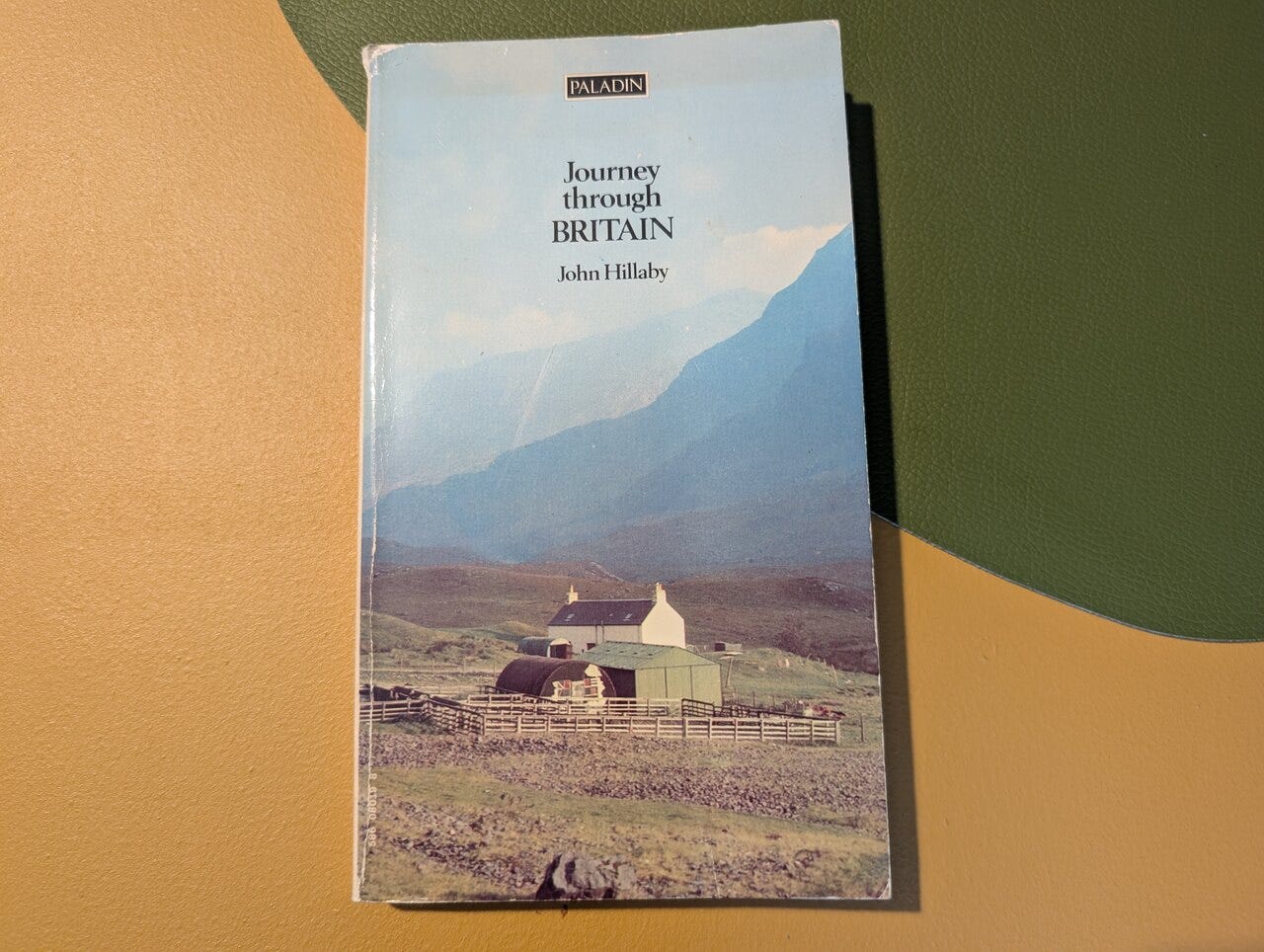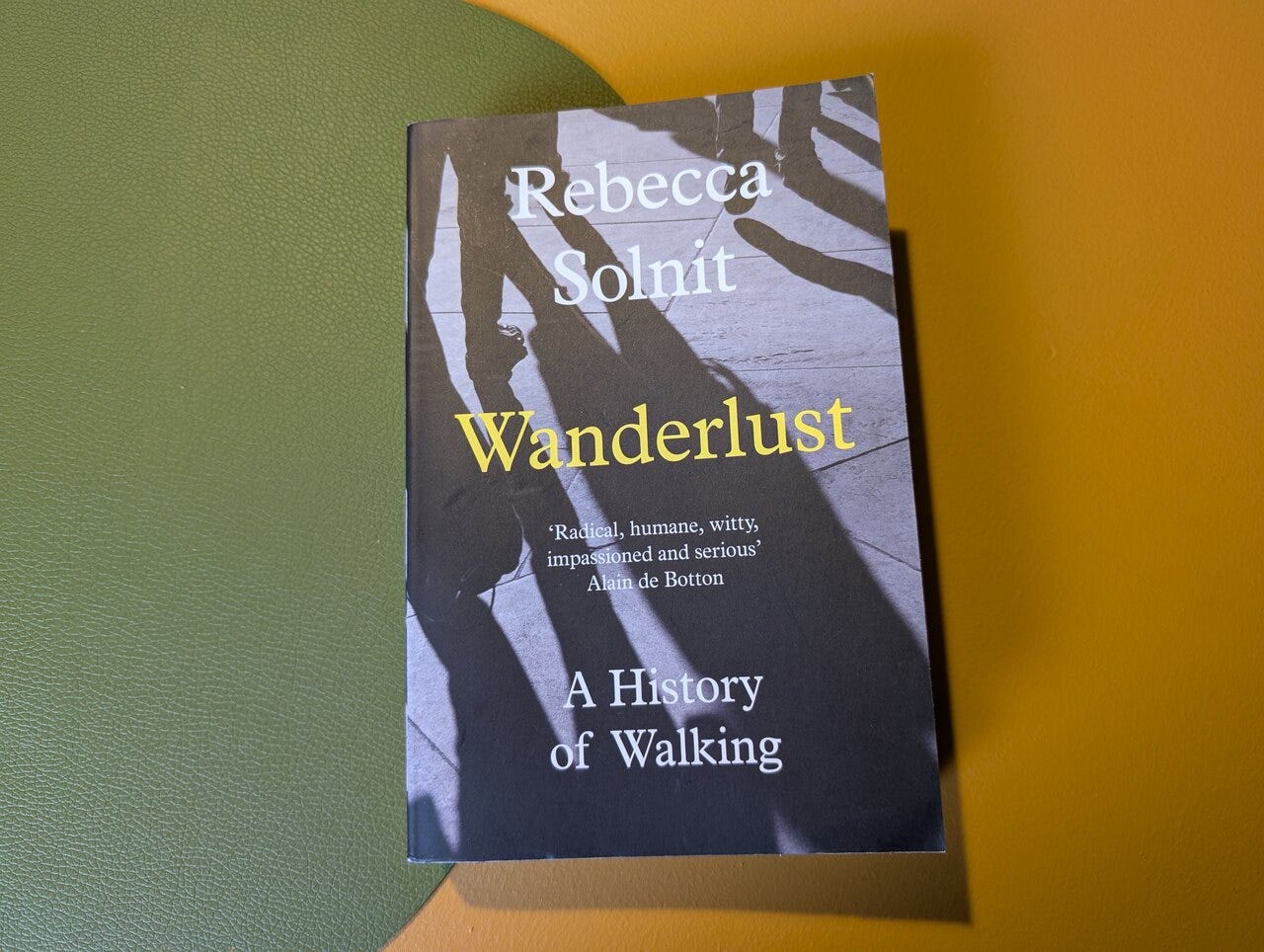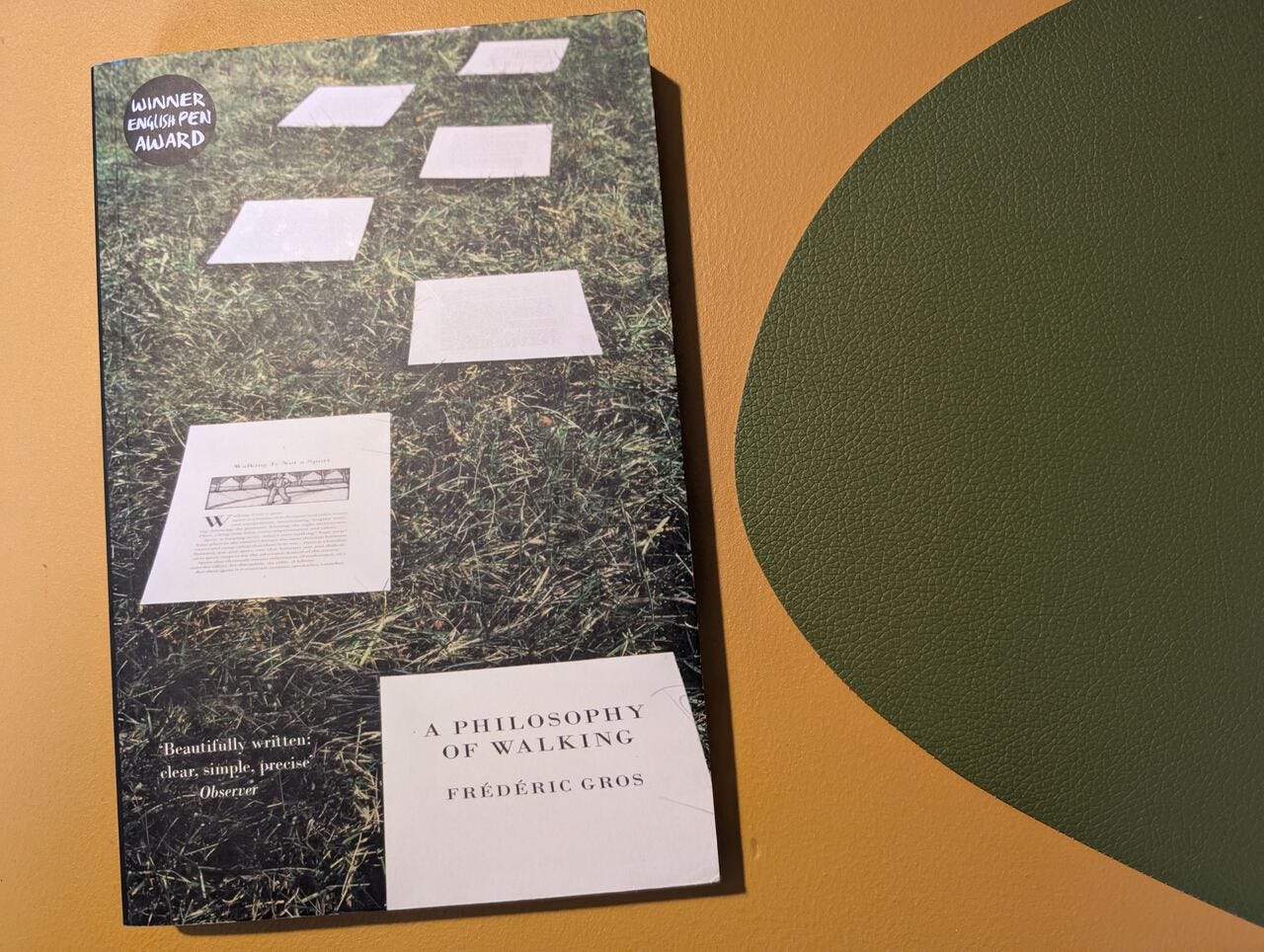Words have the power to change reality. A timely book that signposts new paths and perspectives can be life-altering.
The landscape of writing about walking is especially rich and rewarding, but, as we discovered a few weeks ago, it's also full of pitfalls. In the wake of the controversy that enveloped The Salt Path, I've been thinking about walking books I would be happy to recommend.
I had a lovely afternoon browsing my bookshelves. I'm admittedly more of a collector than a reader; I tend to lay down books like fine wine, waiting for the right moment to crack them open. But this selection was already well-thumbed, and it was a joy to revisit these pages.
One of these books is directly the story of a walk, and another draws inspiration from an epic solo adventure. The other two are more philosophical and metaphorical ramblings on walking, but they’re brilliantly written and enjoyably accessible.
There are links in this article to Pilgrimagic's Bookshop. If you buy these books, I'll receive a small affiliate fee and you'll be supporting local bookstores. However, the first book I want to recommend is long out of print. Hunt it down if you can though. A second hand bookseller may be able to help you find it.
Journey through Britain by John Hillaby
For anyone thinking about long distance walking in the UK, the route from Land’s End to John O’Groats is a bucket list challenge. I’ve only met one person who has attempted it; I met her by chance on the Ridgeway, way off track. By her own admission, she was taking a fairly roundabout route and walking, atypically, north to south.
John Hillaby’s travelogue about his end-to-end walk was first published in 1968, and I have the 1970 paperback edition which I found in a second hand bookshop. Hillaby was already a well-known author and travel journalist when he wrote Journey through Britain; his previous book about walking described his 1,000-mile trek through Africa.
Journey through Britain blends Hillaby’s personal story, anecdotes and encounters with his observations of life in Britain in the late 1960s. In the face of the country’s postwar urban sprawl, he was determined to see what was left of rural life. He planned a route that, as far as possible, avoided all roads.
What I love most about Hillaby’s walk is the ordinaryness of it. He wasn’t overcoming personal tragedy or in search of profound insight. He was simply a 50-year-old man who walked across the country in his most comfortable shoes, just to get a sense of it all in a single journey.
Hillaby’s curiosity and self-deprecating humour shine through in the recounting of his adventures. Even if you never plan to follow in his footsteps, Journey through Britain is a remarkable time capsule, and an engrossing read.
Silence by Erling Kagge
I’ll gladly admit that Silence was a book I bought because I loved its cover. My copy is a small, hardback edition, with a soft, deep blue texture embossed with bronze letters and the image of a mountain range. When I found it in the bookshop, I loved holding it and it seemed inevitable that it would come home with me.
If the walk that inspired Kagge is on your bucket list, you are a lot braver than I am. The roots of Silence lie in the Norwegian explorer’s 1,400km solo walk to the South Pole. Remarkably, he walked without a radio, isolating himself entirely as he faced the harsh, frozen environment of Antarctica. Absolute silence for 50 days.
I’ve got little tolerance for tales of macho adventuring and struggles against nature. Silence is anything but. It’s a deeply philosophical and reflective account, centering more on the experience of silence than the rigours of the journey. As he breezily describes it, “The secret of walking to the South Pole is to put one foot in front of the other, and to do this enough times.”
A content warning is in order, though. Set aside the couple of paragraphs in praise of Elon Musk; the book was first written in 2016, and Kagge has been notably silent on this subject since. But despite this, what’s heartening about Silence is the author’s insistence that peace of mind can be found on the most ordinary of walks. Silence, he says, “is about getting inside what you’re doing. Experiencing rather than over-thinking. Allowing each moment to be big enough. Not living through other people or things.”
That’s a way of walking I can gladly endorse.
Wanderlust by Rebecca Solnit
Rebecca Solnit is a masterful essayist whose writing ranges wide through the landscape of ideas. She first entered my field of vision thanks to the humorous and thought-provoking poem, Excerpts from A Field Guide to Getting Lost, by José A. Alcántara. Solnit’s meandering meditations on literal and metaphorical lostness, which inspired the poem, led me eventually to her other book about walking,Wanderlust.
Wanderlust is billed as a history of walking, but as with any invigorating journey, expect frequent detours and diversions. What I especially love about Solnit’s writing style is her ability to lay out complex paths that draw universal insights from personal themes, and her persistent encouragement towards reflection, social activism and curiosity. In many ways, she’s the perfect walking companion; her insights linger long after the journey is over.
If you are ever in doubt about the importance of walking, Wanderlust is an essential read. For Solnit, walking is what makes us fully human. In her moral universe, walking is an essential tool for political and social change, offering resistance against the ever-increasing drive towards speed in society. Walking, as she sees it, offers both a literal and metaphorical journey, opening space for reflection, resistance and renewal, and serving as an enduring symbol of humanity’s need for freedom, creativity and change.
“Perhaps walking is imagined as an ‘indicator species,’ to use an ecologist’s term,” she writes. “An indicator species signifies the health of an ecosystem, and its endangerment or diminishment can be an early warning sign of systemic trouble. Walking is an indicator species for various kinds of freedoms and pleasures: free time, free and alluring space, and unhindered bodies.”
Buy Wanderlust by Rebecca Solnit
A Philosophy of Walking by Frédéric Gros
If Solnit’s meandering mind captures your attention, A Philosophy of Walking offers an alternative path into the world of ideas.
Philosophical writing can be intimidating, but A Philosophy of Walking is extraordinarily approachable. Each of its short chapters takes a different view. Gros explores the role of walking in the thinking of Rousseau, Nietzsche, Kant and Thoreau, and considers many of the ways in which being on your feet can change your mind. He reflects on ways of walking, from the art of the flaneur to thoughtful strolls and purposeful pilgrimages.
And, most significantly for me, he celebrates the value of slowness.
“Walking is the best way to go more slowly than any other method that has been found… If you want to go faster, then don’t walk, do something else: drive, slide or fly. Don’t walk. And when you are walking, there is only one sort of performance that counts: the brilliance of the sky, the splendour of the landscape.”
Gros’ book is a wonderful primer, full of ideas and provocations. A Philosophy of Walking is both a spiritual and intellectual guide, showing how walking can become an act of personal freedom, renewal and contemplation. He urges us to slow down, disconnect and discover ourselves and our surroundings through the simple act of putting one foot in front of the other.
Buy A Philosophy of Walking by Frédéric Gros
Finding my way
As I opened my copy of A Philosophy of Walking, a small folded map of Galicia’s Costa da Morte slipped from between its pages. I’d marked it with the stages of the walk that took me from Malpica to Cabo Fisterra, and metaphorically through the unfolding of my intentions to the end of my first journey through life.
It’s not an understatement to say that these books have been life-changing for me. Of course, I’ve had to do the work of placing one foot in front of another. But like enchanted paths, I believe that words on a page have a magical power. Synthesised through the human mind and finding expression in movement, a short sentence can be world-altering.
Looking at this small collection of books, I see themes that shape my approach to writing Pilgrimagic, too. I believe not just in the act of walking for its own sake, but in the potential for walking to be personally revolutionary. All four books are founded on the idea that walking is more than mere transportation. Walking is a quest for meaning, renewal and transformation. I love the deliberateness of walking presented by Hillaby, Kagge, Solnit and Gros, and their determination to transcend routine by embracing the introspective path of silence.
But walking is not solely a private act. Every footstep is engaged with the landscape and culture that surround the path. Hillaby sought a route that avoided the growing urbanism of his time, yet he encountered it anyway. Kagge went to the very end of the earth in his quest to understand the noise of the world. Solnit and Gros both trace walking’s role in protest, pilgrimage and reclaiming public space. In different ways for each author, walking is a rebellion: a way of resisting conformity and reclaiming autonomy over mind, body and time.
By removing myself from the noise of roads, cars and speed, I can find freedom on my feet. And that freedom is not for myself alone, but for everyone. Walking is a radical act of resistance, ritual and restoration.
And to begin, we need only take a single step.








Great piece Dru, you spoke about these books with a passion that is really infectious and just makes you want to delve into that path of discovery.
Lovely post. And how apt for a newsletter called "Pilgrimagic"!